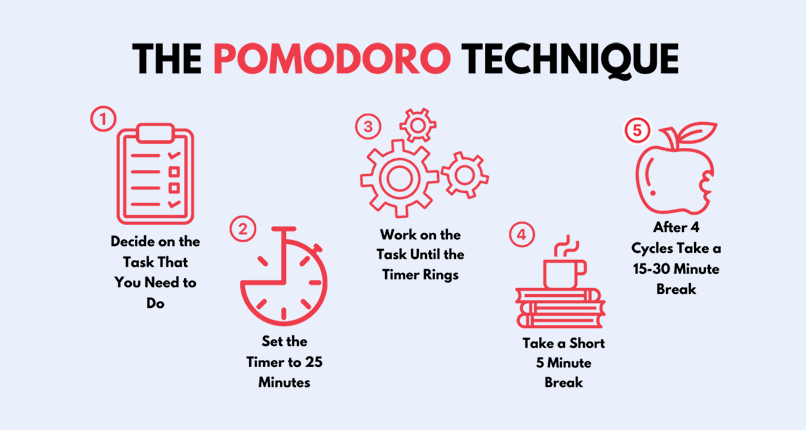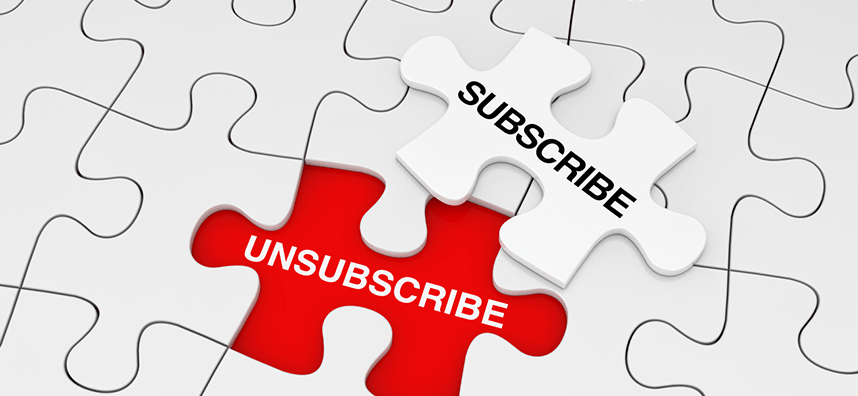Understanding the key principles of time management can help us be more productive throughout the day. We all aim to be more efficient with our time, get more done, and steadily check off everything on our ever-growing to-do list…but it’s easy to feel completely overwhelmed.
Nowadays, the demand on our time is constant. We’re pulled in various directions that consistently fill up our schedules, leaving no room for things like a personal break to help us recharge and continue being productive.
Time management principles can support and elevate our efficiency and establish stability in most areas of our lives. It can help us to achieve our goals, create a work-life balance, and feel more personal satisfaction—even when we feel like our time is limited. With effective time management techniques, we can begin to implement these into our daily routines that improve our focus, block out distractions, and take back control of our time.

Principle of Time Management #1: Plan Ahead
Preparing for the busy week ahead can help you prioritize your tasks and develop a meaningful schedule that keeps you on track. But it’s so much more than listing out all the things you need to get done. There’s a way to do this effectively that supports your productivity…
It’s called the Ivy Lee Method.
In 1918, one of the richest men in the world, Charles Schwab, hired a consultant by the name of Ivy Lee to help his team reach their maximum potential in terms of efficiency. Lee spent approximately 15 minutes with each executive of Schwab’s team and outlined a simple routine for each to try. They were given this strategy:
- At the end of the workday, they were to come up with 6 tasks (and no more than these 6) that they would like to see accomplished the following day.
- After identifying the 6 tasks, they were asked to prioritize them in order of importance.
- The next day, they were instructed to focus on completing the most important task on their list.
- When the first task was completed, they would repeat the same procedure for the second task.
- They would repeat this for the entire list.
- Lee instructed that any tasks not completed for the day be moved to a new list they would create that evening and repeat the steps in the process.
This process worked so well with Schwab’s team that Lee received an equivalent of $400,000 for this one-time consultation.
James Clear, the author of “Atomic Habits”, explains that the genius behind this strategy lies in its simplicity. It’s easy enough to follow with very little complexity. While Clear acknowledges that its straightforward nature is often subject to criticism as it doesn’t take into account events such as emergencies, the Ivy Lee Method is a reliable, structured system that even if distractions were to happen, we can return to this method and continue with our priority list and rearrange as necessary.
Another reason why this method is successful is that it forces you to break the habit of multitasking and only allows you to focus on one task at a time. To be able to complete a task efficiently, we need to devote our full attention to it, lessen the stress that is a result of too many outside factors stealing our focus, and work towards achieving a single, specific goal.
Planning ahead can keep us highly focused on the most essential tasks and limits our distractions.

Principle of Time Management #2: The Pareto Principle
“80% of results will come from 20% of the action.”
This was a generalization first introduced by economist and philosopher, Vilfredo Federico Damaso Pareto and was later defined as the 80/20 rule. After initially observing how only 20% of his pea plants generated about 80% of the healthy pea pods in his garden, he began to look at other areas of seemingly uneven allocation. He went on to notice that approximately 80% of the land in Italy was owned by 20% of the population. To support his observation, he carried out surveys to different countries and discovered a similar pattern.
So, how can we apply the Pareto Principle to our own everyday lives? If you take a look at the apps on your phone, out of the 80% you have downloaded, you likely only use about 20%. Or, if we apply this concept to athletes, 80% of their results are produced from 20% of their hard work. In this example, it only makes sense that these athletes put their full focus on that 20% to make the most use of their time.
Now, let’s use this in the context of our productivity. According to the 80/20 rule, approximately 80% of our work results are due to 20% of our efforts. So, just as with the example using athletes, we should devote time to refine our processes and focus on this 20%.
We can do this in a few easy steps:
- Identify your most important goals. Depending on what you would like to accomplish, this may mean examining your current status, what will need to happen in order to achieve these goals, and what you need to take off your plate so that you have the capacity to meet your objectives.
- Prioritize your goals. Allocate your efforts to the goals that need the most attention so that you can get the highest output.
- Focus on these goals only. For example, if you’re a team lead that would like to see a particular project accomplished at the end of the quarter, you’ll want to identify the tasks that will help you get to this goal. Any other unrelated tasks can either wait until the next quarter or be eliminated entirely based on necessity.

Principle of Time Management #3: Avoid distractions
We live in a world full of distractions, especially as more and more employees value flexibility in their schedules, which includes spending less time in an office setting and more time working from home. From messages on our phones to notifications that pop up on our computers, our attention is constantly pulled in a variety of directions, interrupting our focus.
There are simple ways we can build boundaries that enable us to get more done and tune out the noise.
- Avoid social media. For some of us, this is a tough one. Social media has become a way to escape our stress. However, if social media is interfering with your productivity and setting your phone aside or minimizing your browsers isn’t making much of a difference, it may be time to download an app that blocks social media from your screens for a period of time. Here are a few that you can download right now:
- Freedom app – free to use for the first seven sessions
- RescueTime – free for the first 14 days of use
- Sarene – free limited trial
- SelfControl – free to use
- Put away the phone. Another hard habit to break, but once you get into the routine of turning off your phone, setting it to airplane mode, or just setting it out of reach for a defined period of time, this will help you decrease the number of distractions that can interfere with your productivity.
- Let people know you’re unavailable. If you have certain people that you speak with regularly, it’s a good idea to let them know when you will be unavailable. This way, you can set some boundaries during the times that you’ve set aside to truly focus. This will also limit some of the notifications that may pop up on your screens while you’re working.
- Dress for the occasion. Although you might be tempted to stay in your comfiest outfit while working from home, it helps to get out of your PJs and get dressed for the occasion when you want to boost your productivity. Making this an essential part of your routine can help send signals to your brain that it’s time to focus rather than relax. According to The Cut, dressing for work can help sharpen focus and improve confidence. Staying in your comfy clothes might actually increase the temptations to be less productive.
This approach isn’t limited to our clothing either. Creating a workspace that is conducive to productive work can also help prevent the number of potential distractions.

Principle of Time Management #4: Break big tasks into smaller pieces
Desmond Tutu, a South African Anglican cleric and theologian, once said, “there is only one way to eat an elephant: a bite at a time.”
If we examine this through the lens of our productivity, it means that we might find a task overwhelming and hard to do because of how daunting the project may seem at first, but it’s completely possible to get it done if we break it up into smaller, more manageable chunks. This lessens our feelings of overwhelm towards complex projects.
Breaking up bigger tasks into smaller ones can also help overcome another hurdle: getting started. Sometimes, the issue with managing our time starts at the beginning. Because we’re likely in a state of stress, it halts our productivity, and we’re more likely to avoid the task we need to complete.
Alternatively, we can have so many ideas that we easily spend a ton of time debating what we should even do. But if we’ve taken the time to trim, prioritize, and divide the project into feasible parts, we’ll have an easier time committing to the smaller task and actually completing it.

Principle of Time Management #5: Create margin for unexpected tasks
As important as it is to manage our time in a strategic and organized manner, it’s just as vital to ensure you’re making space for unexpected tasks. We can plan as best we can to avoid having surprise projects or last-minute requests, but at times, it can be inevitable.
The best way to protect our time is to create windows in our schedule dedicated specifically for “catch-up” time. The best way to accomplish this is to review your calendar for the day, or week, and carve out these particular blocks. This achieves a couple of things for you:
- You continue to think proactively.
- You avoid some added stress when unexpected requests come your way.
- If you don’t end up using the time to catch up or work on projects, you’ve reserved some free time for you to enjoy!
Saving room for your unexpected tasks can help create flexibility in your schedule so that you’re still able to get your tasks done and provides an opportunity to incorporate some time to get ahead and stay productive.

Principle of Time Management # 6: Make time for self-care
When we feel that time is working against us and there’s just too little of it to get anything done throughout the day, we’re often stressed and mentally and physically exhausted. For many of us, it’s not a priority in our hectic schedules. However, in the end, our health is a huge factor in our overall productivity. It’s essential that we take care of ourselves in order to have a clear mind when managing our time.
According to Forbes, self-care is actually good for your cognitive functions. Russel Thackery, a licensed clinical psychologist, provided Trello with insights into how this works in relation to productivity. Thackery stated that people who make self-care a priority often have an easier time concentrating and end up producing more.
Those who learn to take care of their mental and physical well-being often exercise regularly and practice meditation or other mindfulness practices. They make room in their schedule to have this safe space to recharge and lessen their stress and anxiety.
One of the most important aspects of self-care is understanding that it looks different for everyone. It doesn’t necessarily mean a weekly trip to the spa or getting a regular massage. It can be as simple as reading a book that brings you joy or enjoying your morning coffee in peace.
When you’re working, self-care can manifest in the form of frequent breaks. It’s important to step away consistently to prevent feeling burnt out by long stretches of extreme focus. Taking breaks can help maintain performance throughout the day and decrease overall mental and physical exhaustion. Think about it this way: Taking frequent breaks helps you recover so that you can think creatively and get your work done faster. During these breaks, you can do anything that relaxes you. It’s your chance to step away from work altogether and return refreshed.
These Important Time Management Principles Will Help You Be More Productive
Whether you’re looking for ways to increase your overall productivity or are truly struggling to manage your time, these important time management principles will help you build an effective routine so you can get more done.
It all starts with taking a few moments to plan ahead and prioritize your tasks according to necessity. Anything extraneous should be trimmed from your schedule to allow you to have more flexibility with your time. Lessen your distractions by being conscious of what is diverting your attention and take actionable steps to eliminate them during your dedicated windows of productivity.
Be aware of longer, more complex tasks that require more of your effort and break them into smaller assignments so that you lessen your feelings of overwhelm. Stay proactive and make space for unexpected tasks that are an inevitable part of our workflow. And finally, prioritize your health and wellbeing so that you can feel restored and energized when you return to the task at hand so that you can complete it as efficiently as possible.
Use your time wisely (and save your sanity) by implementing these useful methods into your daily routines!
























































